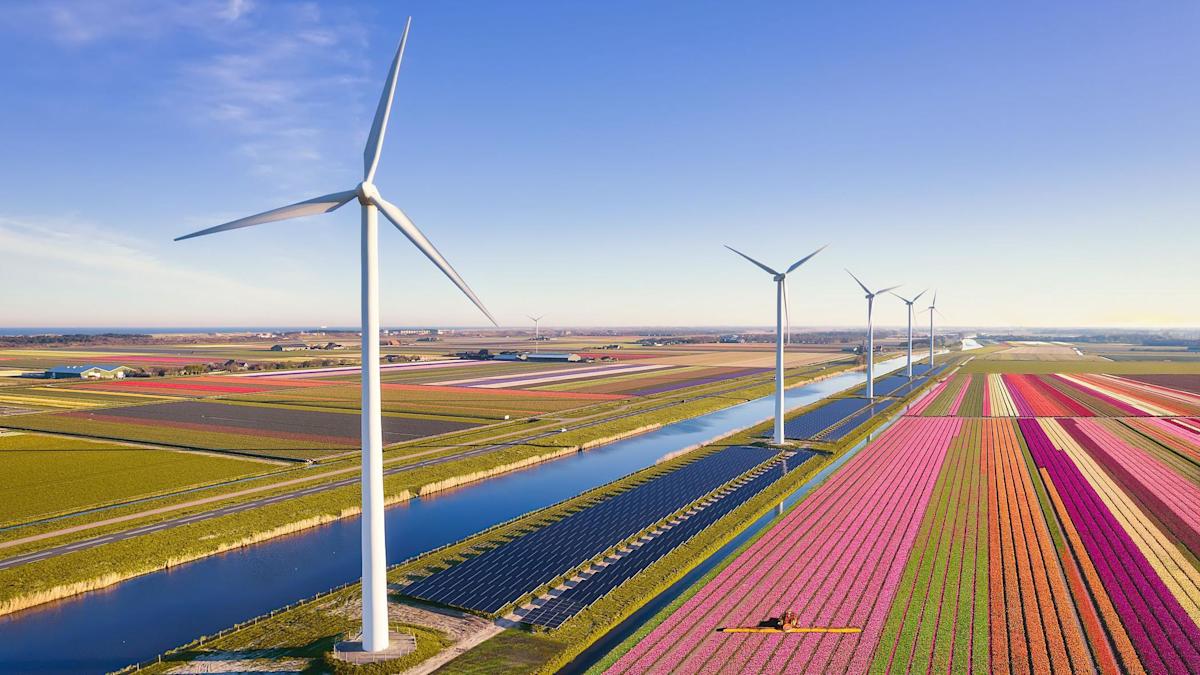The Netherlands’ Renewable Energy Success Turns Into a Grid Challenge
In a country once powered by its North Sea gas reserves, the Netherlands has transformed into one of Europe’s leaders in renewable energy. Solar panels now cover rooftops across more than a third of Dutch homes. Furthermore, offshore wind farms are projected to become the nation’s largest power source by 2030. The government’s energy transition campaign, known as Flip the Switch, encourages citizens to manage their electricity use responsibly during peak hours to prevent overloading the grid.
However, this green revolution has come at a cost. The Dutch national power grid—originally designed for centralized, fossil-fueled energy production—can no longer keep pace with the decentralized nature of modern renewables. Small-scale solar arrays and wind turbines feed energy back into local networks not built to handle the surging flows of electricity. Experts describe this as “grid congestion,” a phenomenon likened to a traffic jam in the power system. It is where energy supply and demand collide in real time.
According to Eneco, one of the Netherlands’ largest renewable energy suppliers, about 70% of its power now comes from solar and wind. But this success has exposed deep weaknesses in grid design. Large industrial zones and residential areas alike are facing delays in new power connections. This happens because the existing cables and transformers cannot manage the growing load. As a result, both energy producers and consumers are placed on waiting lists—some stretching for years—before they can plug in.
Billions of Dollars Needed to Reinforce the National Power Grid
The national grid operator TenneT has unveiled an ambitious plan to overhaul the Dutch power network by 2050, pledging an investment of €200 billion (around $235 billion) to reinforce the system. This includes laying more than 100,000 kilometers of new cables. Additionally, they are upgrading transmission nodes across the country. Yet, these projects are hindered by slow permitting processes, strict land-use regulations, and the sheer speed of renewable energy expansion.
Eugene Baijings, who leads grid congestion initiatives at TenneT, has explained that each grid expansion project takes about a decade to complete. There are eight years of permits and only two years of actual construction. The result is a growing mismatch between renewable energy production and infrastructure readiness.
Meanwhile, the Ministry for Climate Policy and Green Growth has acknowledged that the country underestimated the rapid surge in electricity consumption. Energy use has soared due to the widespread adoption of electric vehicles, home heat pumps, and battery-powered devices. The Netherlands boasts the highest number of EV charging stations per capita in Europe. As a result, the demand for power has outpaced forecasts, placing even greater strain on transmission lines and substations.
In response, policymakers are prioritizing a “National Grid Congestion Action Plan” that simplifies approval procedures for grid projects, encourages distributed energy storage, and reduces financial incentives for feeding surplus solar energy back into the grid. In some areas, homeowners may soon have to pay fees for exporting excess solar power. This is a sharp reversal from past policies designed to boost solar adoption.
Industry, Housing, and Energy Growth Threatened by Capacity Limits
Grid congestion is now creating ripple effects throughout the Dutch economy. Businesses are facing delays in expansion plans. New housing projects are being postponed, and renewable producers are stuck waiting for permits to feed their electricity into the system. TenneT reports that 8,000 companies are currently waiting to supply power to the grid. Also, another 12,000 are waiting for approval to consume more electricity.
The Dutch Chemical Association warns that this issue threatens the competitiveness of the Netherlands’ industrial base. Without faster infrastructure upgrades, companies may shift investments to other European countries where grid access is more reliable. New housing projects, particularly in growing regions like North Holland and Utrecht, have also stalled because local grids cannot support additional load.
Energy experts agree that the Netherlands’ situation highlights a broader European challenge. Clean energy infrastructure has expanded far faster than the power systems that support it. Nations that once prioritized generation capacity must now pivot toward modernizing distribution networks. Professor Damien Ernst of Liège University calls this “a continental problem.” Europe’s race toward decarbonization risks being slowed by outdated electrical frameworks.
Despite these growing pains, the Netherlands remains committed to its sustainability goals. Expanding renewable capacity, modernizing its grid, and introducing smarter energy management systems could ultimately turn the crisis into an opportunity. With coordinated investment, streamlined legislation, and technological innovation, the Dutch energy transition can still achieve balance. This approach ensures that the nation’s renewable future is both green and reliable.







